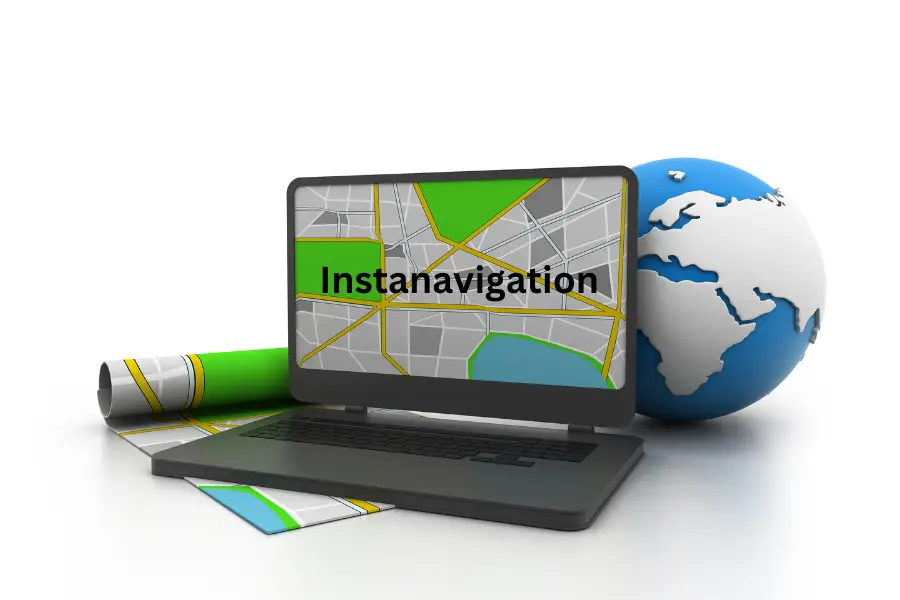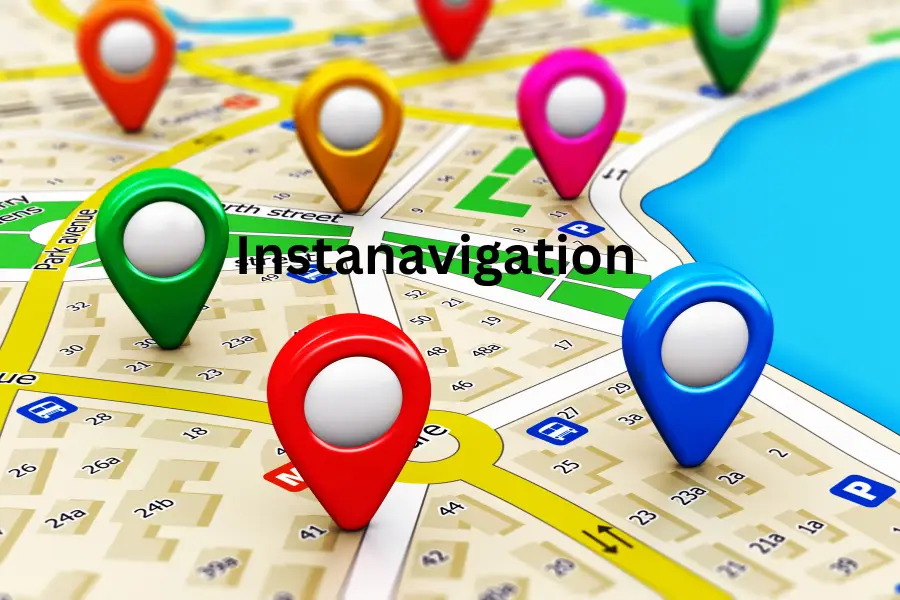Instanavigation,In today’s fast-paced world, navigation systems are necessary for everything from road trips to maritime journeys. However, the demand for instant accuracy and precision in navigation has led to the development of instanavigation, a cutting-edge system that provides real-time, accurate location services. But what exactly is Instanavigation, and how did it come about?
Instanavigation is a modern navigation system that has revolutionized how we find our way, whether on the road, in the air, or on water. It ensures instant location updates, improved accuracy, and seamless user experiences, making it invaluable in personal and professional settings. This article will explore its history, technological evolution, and profound impact on various industries.
The History of Navigation
The concept of navigation has existed for centuries, dating back to ancient times when humans used the stars, the sun, and the landscape to find their way. The introduction of tools such as compasses in the 11th century revolutionized navigation. Fast-forward to the 20th century, when the advent of the Global Positioning System (GPS)marked a pivotal moment in navigation technology.
GPS, launched by the U.S. Department of Defense in 1973, became the foundation for modern navigation systems. Over the years, GPS technology evolved and improved in accuracy, speed, and coverage. Today, Instanavigation builds upon this foundation by offering instantaneous navigation data, ensuring precise location information at all times, without delays.
What is Instanavigation?
Instanavigation is an advanced navigation system that delivers real-time, instantaneous location updates and tracking. It uses a combination of satellite positioning, cellular networks, and Wi-Fi-based positioning systems to ensure precise location data with minimal latency.
The major innovation behind Instanavigation is its ability to process and deliver navigation data instantly, significantly reducing errors and enhancing navigation safety. Whether driving, flying, or sailing, instanavigation keeps you updated every second, allowing you to make fast and accurate decisions.
How Does Instanavigation Work?
Instanavigation uses a combination of advanced technologies to achieve real-time location accuracy. These include:
Global Navigation Satellite Systems (GNSS):
Global Navigation Satellite Systems (GNSS) refers to a network of satellites that provide geospatial positioning data to receivers on Earth. This allows users to determine their exact location, velocity, and time anywhere on the planet. GNSS includes systems like GPS (United States), GLONASS (Russia), Galileo (European Union), and BeiDou (China). These systems are widely used in navigation, mapping, and various other applications that require precise location information.
Inertial Navigation Systems (INS):
Inertial Navigation Systems (INS) are navigation devices that calculate a moving object’s position, velocity, and orientation using internal sensors like accelerometers and gyroscopes. INS operates without external signals by measuring changes in speed and direction, making it useful for navigation in environments where GPS signals are unavailable, such as underwater or in space.
Cellular Network and Wi-Fi Data
Cellular Network
A wireless communication system that uses a network of radio towers to connect mobile devices to the internet and other services. It relies on cellular technology, which divides geographic areas into cells, each served by its own tower.
Wi-Fi Data
A wireless technology that allows devices to connect to the internet via radio signals through a local area network (LAN), typically provided by a router or access point. Wi-Fi data is used for internet access within a limited range, such as a home or office.
By integrating these systems, Instanavigationprovides instant feedback to users, ensuring that navigation data is continuously updated without delay. This can be especially critical in high-speed scenarios such as aviation or military operations.
Benefits in Transportation
The transportation industry has greatly benefited from Instanavigation technology. Drivers, truckers, and logistics companies receive instantaneous updates on location and traffic conditions, which helps them optimize routes, improve fuel efficiency, and meet delivery deadlines.
Real-time traffic updates:
Real-time traffic updates Instantaneous information on current traffic conditions, helping users avoid congestion, roadblocks, and accidents. This allows for more efficient route planning, saving time and reducing travel delays.
Accurate Estimated Time of Arrival (ETA):
Accurate Estimated Time of Arrival (ETA) Provides a precise prediction of when you’ll reach your destination based on current traffic conditions, route, and speed. This helps with better planning and punctuality.
Fuel efficiency:
Fuel efficiency helps optimize routes to reduce travel time and avoid heavy traffic, leading to less fuel consumption and lower costs, while minimizing environmental impact.
According to a 2022 study on logistics operations, companies using instanavigation systems reported a 12% improvement in delivery times and a 10% reduction in fuel consumption.
Role in Aviation
In aviation, where safety is paramount, Instanavigation has significantly enhanced the safety and efficiency of air travel. It provides instant updates on flight paths, weather conditions, and air traffic, empowering pilots to make informed decisions and ensuring a safe journey for passengers.
Pilots rely on Instanavigation
Real-time weather alerts:
Real-time weather alerts Provides up-to-the-minute weather information, enabling pilots to avoid hazardous conditions, adjust flight paths, and ensure safer and smoother flights
Precise flight tracking:
Precise flight tracking allows pilots to monitor their exact position in real-time, ensuring accurate navigation along flight paths. This enhances safety, supports efficient route adjustments, and improves communication with air traffic control for smoother, more coordinated flights.
Optimized flight paths:
Optimized flight paths enables pilots to select the most efficient routes by considering factors such as wind speed, air traffic, and weather conditions. This helps reduce flight time, fuel consumption, and operational costs while ensuring a smoother and safer journey.
Instanavigation for Marine Navigation
Instanavigation has also transformed marine navigation, particularly in commercial shipping. Maritime operations rely heavily on accurate navigation for safety, efficiency, and regulation compliance. Instanavigation allows ships to stay on course even in areas with limited visibility or rough weather.
Key benefits include:
Real-time tracking:
Ships can be monitored continuously, ensuring they stay on course and avoid collisions.
Weather and sea condition updates: Instanavigation provides instant data on sea conditions, enabling captains to avoid dangerous waters.
Compliance with regulations:
Accurate tracking helps meet international maritime regulations, reducing the risk of accidents and improving environmental safety.
Maps and Apps

Today, instant navigation plays a huge role in our daily lives through navigation apps like Google Maps, Waze, and Apple Maps. These apps offer real-time directions, traffic alerts, and estimated arrival times, all thanks to the instant feedback loops made possible by Instanavigation systems.
Instanavigation helps users navigate complex roads and avoid city traffic jams while providing precise guidance on less familiar roads in rural areas. It’s no wonder that 85% of smartphone users report using some form of navigation app regularly. These apps, like Google Maps, Waze, and Apple Maps, offer real-time directions, traffic alerts, and estimated arrival times, all thanks to the instant feedback loops made possible by Instanavigation systems.
Future of Instanavigation
In the future, Instanavigation is set to play a pivotal role in emerging technologies, particularly in developing autonomous vehicles and smart cities. These systems, relying on instantaneous navigation data, have the potential to revolutionize urban mobility, making it safer, more efficient, and less congested.
Combining sensors, cameras, and Instanavigation in autonomous vehicles will ensure that cars can make split-second decisions based on real-time data. Smart cities will also benefit from these systems by optimizing traffic flows, reducing congestion, and improving public transportation systems.
The Challenges and Limitations
Despite its many advantages, Instanavigation also faces challenges. These include:
Signal interference:
Refers to disruptions in communication signals caused by obstacles like mountains, buildings, or atmospheric conditions. For navigation systems, this interference can lead to inaccurate positioning, delayed updates, or complete signal loss, affecting the reliability and precision of the system.
Data privacy concerns:
Involves the risk of personal and location data being collected, shared, or misused by navigation systems. Users may be vulnerable to breaches, unauthorized tracking, or data being sold to third parties, raising concerns about how sensitive information is stored, accessed, and protected.
Dependency on technology:
Refers to the reliance on digital systems and devices for navigation, which can become a vulnerability. If technical issues arise, such as software glitches, hardware failures, or power outages, users may be left without critical navigation assistance, leading to potential safety risks or inefficiencies.
Overcoming these challenges will require continued advancements in technology and robust security measures.
Conclusion
Instanavigation has redefined how we navigate the world, offering instantaneous and precise location data across various industries. From transportation and aviation to maritime and everyday navigation apps, the system’s ability to process real-time information ensures better decision-making, enhanced safety, and, most importantly, optimized travel experiences, making journeys more efficient and enjoyable.
As technology advances, so will Instanavigation, particularly with the rise of autonomous vehicles and smart cities. The future looks bright for this evolving system, more significant innovations in how we find our way.
How do you think Instanavigationwill impact the future of transportation and smart cities?
For more in-depth articles, explore our blog!
FAQs
What is Instanavigation?
Instanavigation is a real-time navigation system that provides instant and accurate location updates, improving navigation across multiple industries.
How does Instanavigation differ from traditional GPS?
Unlike traditional GPS, which can slightly delay data, Instanavigation provides instant feedback, ensuring real-time accuracy for users.
What industries benefit most from Instanavigation?
Industries such as transportation, aviation, maritime shipping, and logistics benefit greatly from Instanavigation due to its real-time accuracy.
How does Instanavigation enhance personal navigation apps?
Instanavigation allows apps like Google Maps and Waze to provide instant updates on traffic, road conditions, and estimated arrival times, ensuring seamless user experiences.
What challenges does Instanavigation face?
Challenges include signal interference, privacy concerns, and dependence on technology, all needing addressing as technology evolves.

